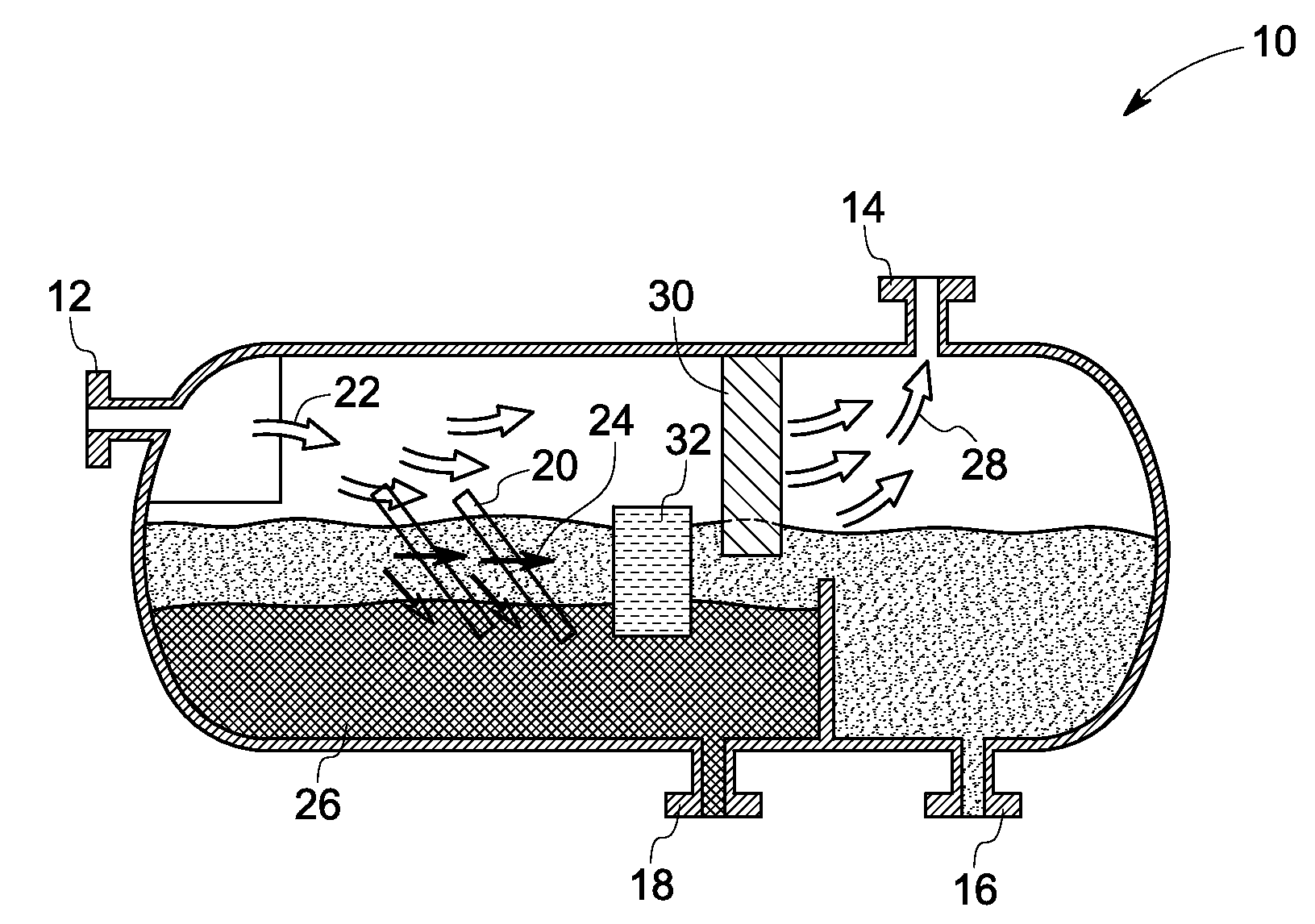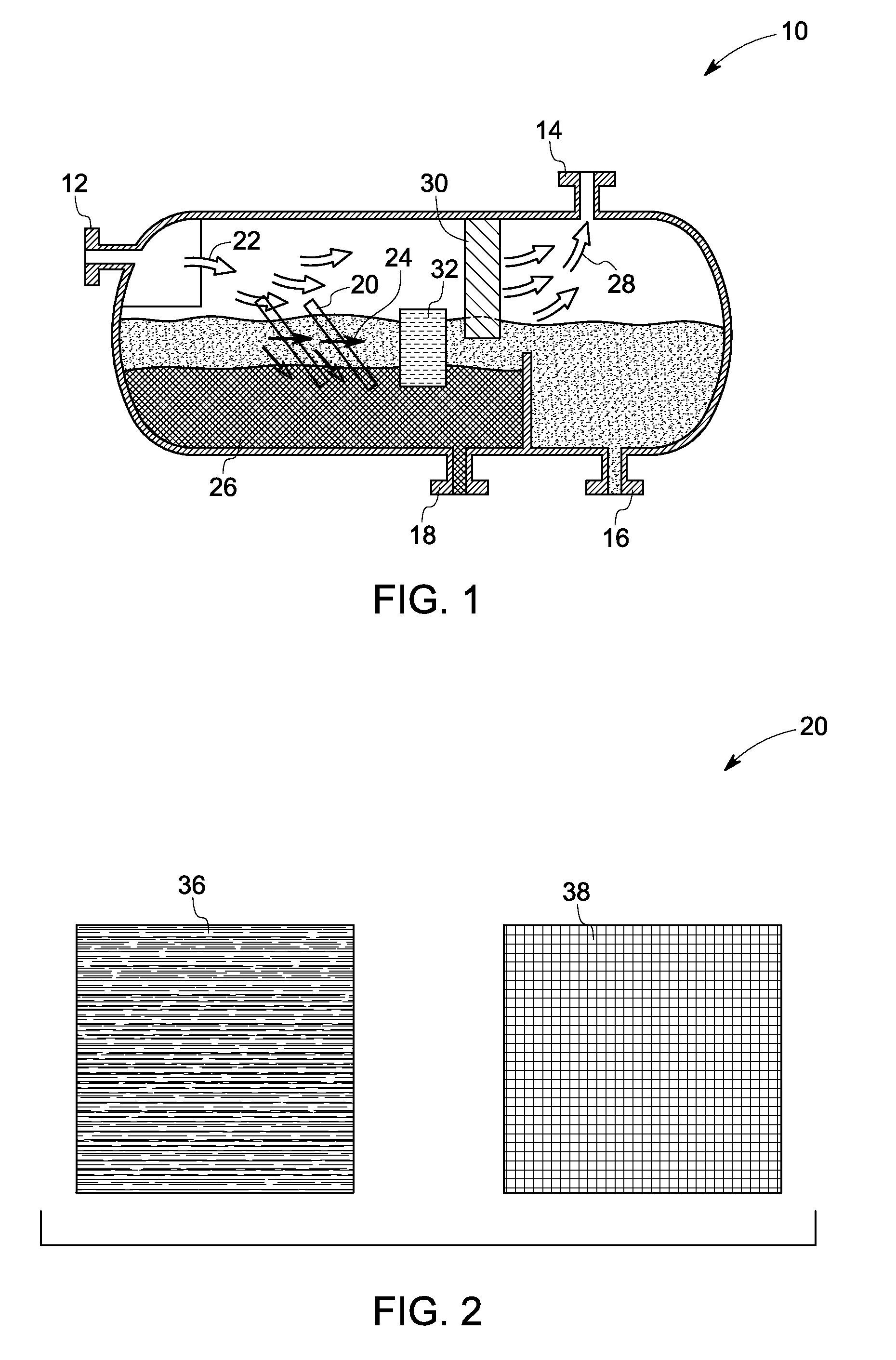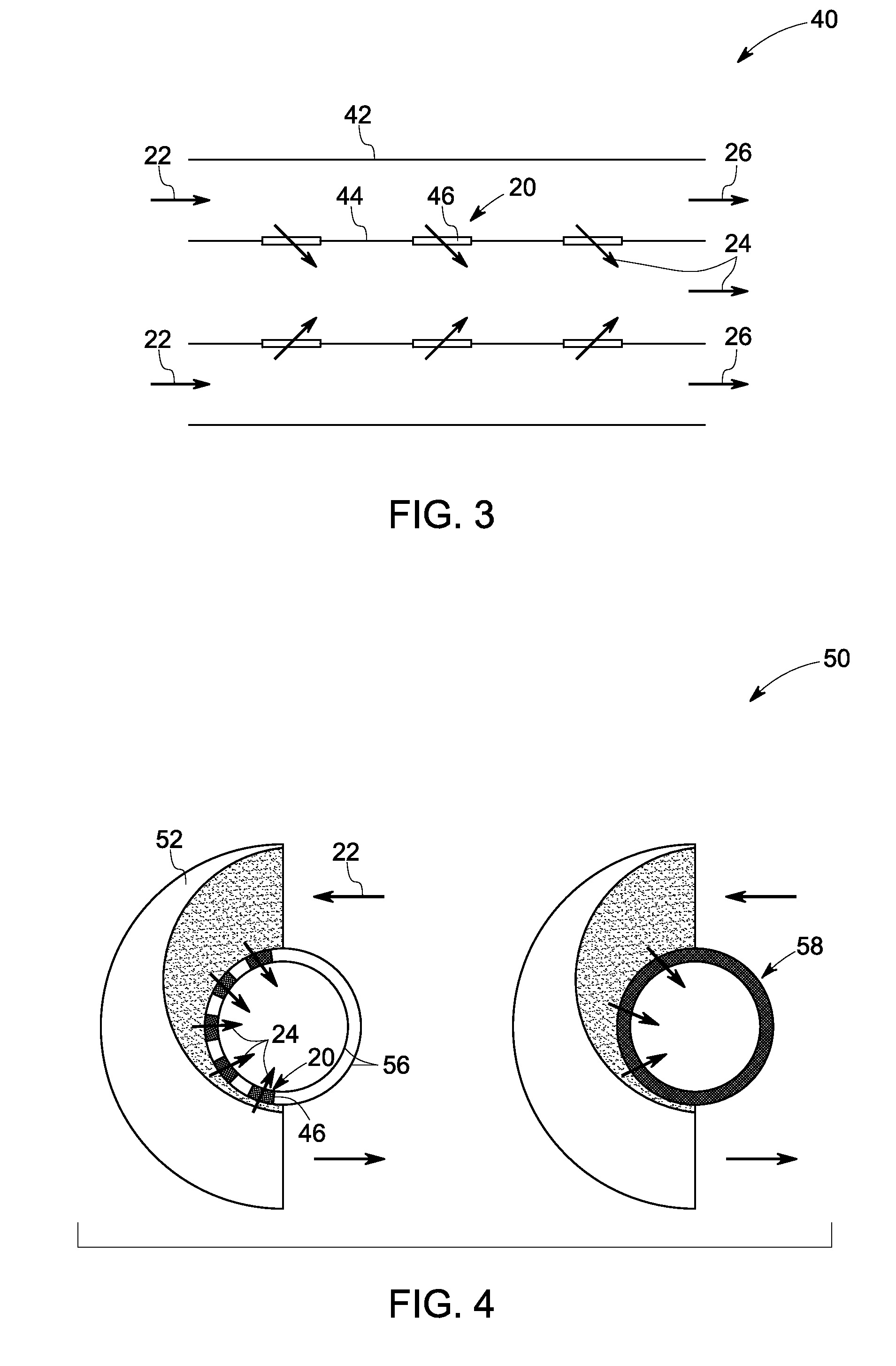Oil water separation apparatus
a technology of oil water separation and oil water tank, which is applied in the direction of separation process, wellbore/well accessories, liquid displacement, etc., can solve the problems of inability to add sufficient quantities of solvent to make it possible to process oil-water, the complexity of oil-water separation facilities, and the inability to process oil-water
- Summary
- Abstract
- Description
- Claims
- Application Information
AI Technical Summary
Benefits of technology
Problems solved by technology
Method used
Image
Examples
example 1
[0041]A 1 meter by 1 meter stainless steel mesh screen having an average pore size of about 1 cm by 1 cm and a mesh thickness of about 0.25 cm is treated with a hot solution of linear low density poly(ethylene) (LLDPE) in xylene-ethanol in an amount sufficient to coat the mesh surfaces while leaving the pores open. The coating of LLDPE on the stainless steel is superhydrophobic and oleophilic. A plurality of such treated mesh screens is then disposed within the flow path of a subsea separation vessel.
example 2
[0042]A cyclic separator comprising an interior surface made of LLDPE is attached to a source of hot (120° C.) xylene. Hot xylene is passed through the cyclonic separator over a period of time ranging from about 1 minute to about 10 minutes. The feed of hot toluene is discontinued and immediately thereafter a hot mixture of xylene and ethanol (1:1) is recirculated through the cyclonic separator. Heating of the recirculating mixture of xylene and ethanol is discontinued and recirculation is continued until the temperature of the xylene-ethanol mixture reaches ambient temperature. The treated interior surface of the cyclonic separator is superhydrophobic and oleophilic.
example 3
[0043]The inner tube of a concentric tube separator constructed of LLDPE is immersed in hot xylene for a period ranging from about 1 minute to about 10 minutes. A volume of ethanol equal to the volume of xylene is then added and the bath is allowed to cool to ambient temperature. The inner tube of the concentric separator is then disposed within the outer tube of the concentric separator and the concentric separator is disposed within the flow path of a subsea separation vessel. The surfaces of the treated inner tube of the concentric tube separator is superhydrophobic and at least oleophilic.
PUM
| Property | Measurement | Unit |
|---|---|---|
| contact angle | aaaaa | aaaaa |
| oil contact angle | aaaaa | aaaaa |
| oil contact angle | aaaaa | aaaaa |
Abstract
Description
Claims
Application Information
 Login to View More
Login to View More - R&D
- Intellectual Property
- Life Sciences
- Materials
- Tech Scout
- Unparalleled Data Quality
- Higher Quality Content
- 60% Fewer Hallucinations
Browse by: Latest US Patents, China's latest patents, Technical Efficacy Thesaurus, Application Domain, Technology Topic, Popular Technical Reports.
© 2025 PatSnap. All rights reserved.Legal|Privacy policy|Modern Slavery Act Transparency Statement|Sitemap|About US| Contact US: help@patsnap.com



